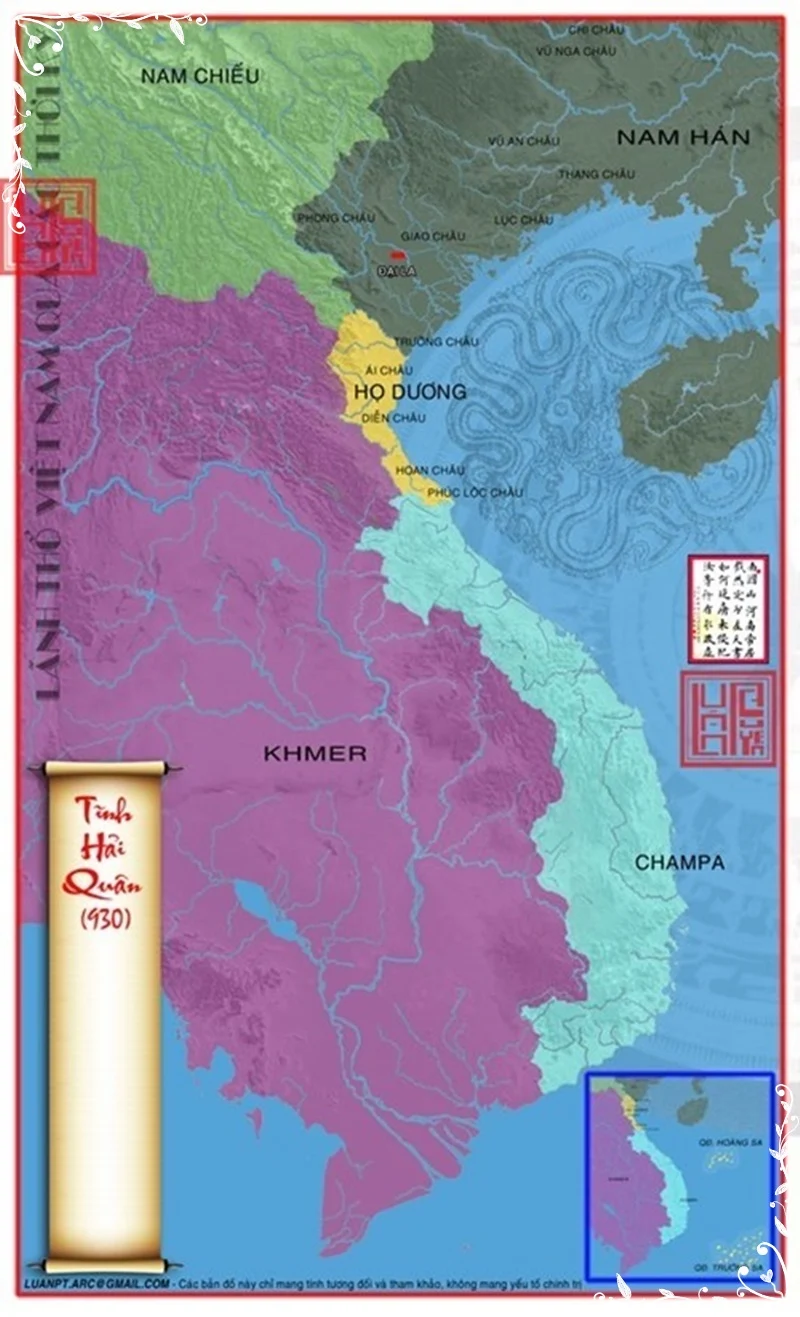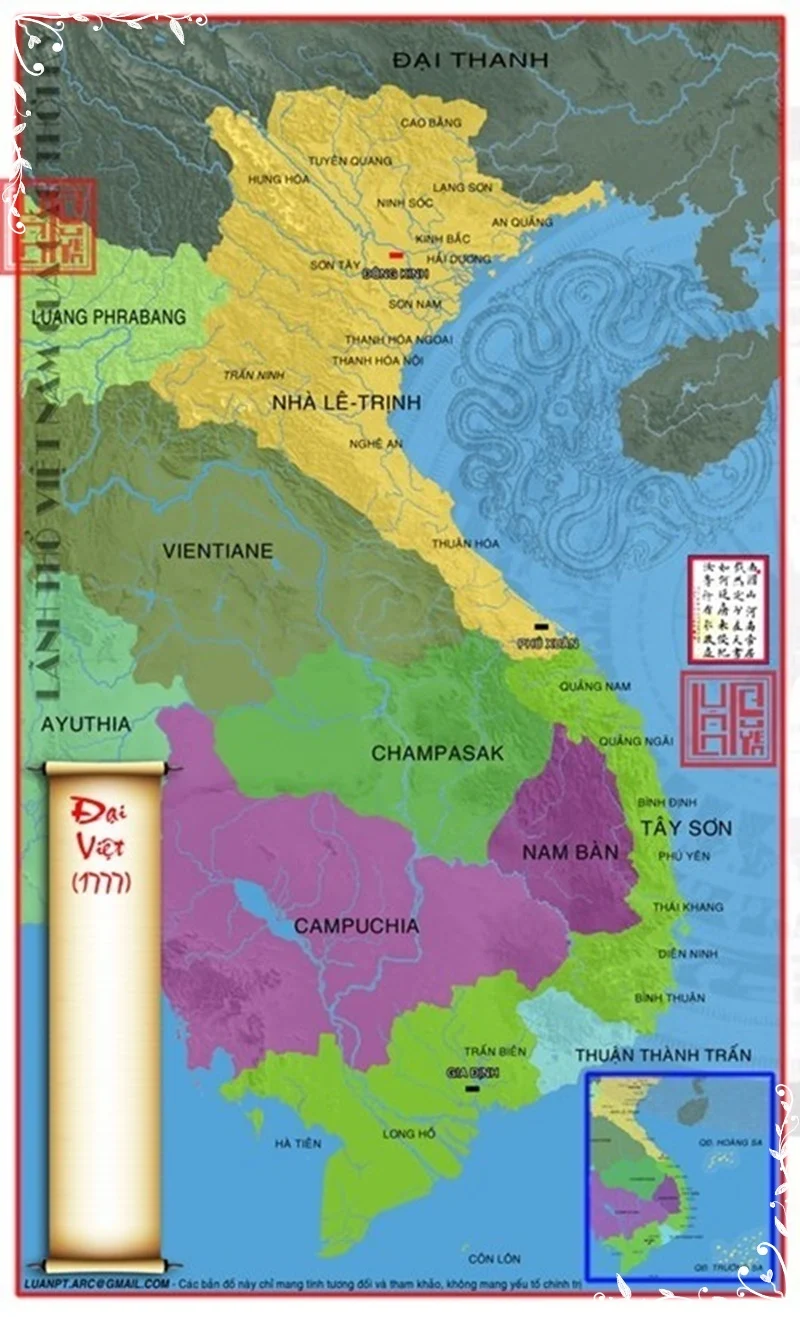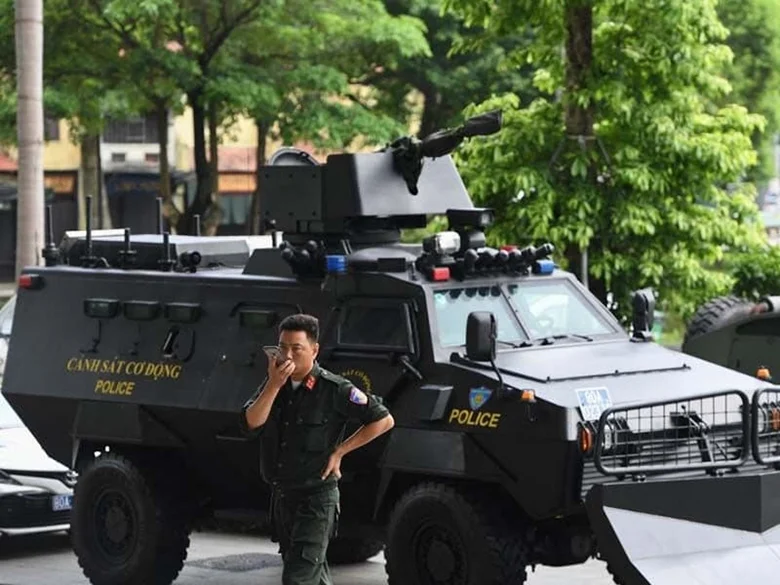ឯកសារសំខាន់ៗមានដូចជា៖
- ភូមិវិទ្យា ជនជាតិនៅកម្ពុជា
- ភូមិសាស្រ្ត នយោបាយ វៀតណាម
- ជនជាតិ វៀតណាម នៅកម្ពុជា
- មហា អាណាចក្រ ចម្ប៉ា / ចាម
- ចាម ព្រះពុទ្ធសាសនា
- ហ្គាហ្វារ ពាងម៉េត អគ្គរដ្ឋទូតខ្មែរប្រចាំ UN ឆ្នាំ ១៩៧០
- ចលនា កុក ស Ksor Kok
- ចលនាយុវជន មាតាធម្មជាតិ អាឡិច ហ្កោនសាឡេស ដាវីតសុន Alex (Alejandro) Gonzalez
- ចលនា Degar ដេហ្គា និង ដ្រូន នៅ រតនគីរី មណ្ឌលគីរី ស្ទឹងត្រែង ក្រចេះ
- ចាម គ្រឹស្តិសាសនា (ចលានាបះបោនៅ ដាឡាត់ Đắk Lắk )
- ចាម ហិណ្ឌូ សាសនា
ជាយុទ្ធសាស្រ្ត ប៉ូឡូញ គឺរុញកងទ័ពរាប់ម៉ឺននាក់ ចូលទៅជួយច្បាំងប្រទេស អ៊ុយក្រែននៅភាគខាងតើតប្រទេស ជាប់ព្រំដែនរស្សី ដើម្បី ពង្រឹងកងទ័ពចូលក្នុងទឹកដីអ៊ុយក្រែន ព្រំដែនអ៊ុយភាគខាងលិច ទីដែលជា អតីតទឹកដីប៉ូឡូញ ឬ បណ្តាខេត្តក្រុង មានជនជាតិ ប៉ូឡូញកំពុងរស់នៅ--គោលនយោបាយនេះ ដូចគ្នាជាមួយ ប្រទេសថៃ បញ្ជូនកងទ័ពខ្មែរក្រហម ទ័ពសឺនសាន ទ័ព ហ្វុន ស៊ិនប៉ិច និងទ័ព Degar កាន់សាសនាគ្រឹះ គាំទ្រ រដ្ឋាភិបាលក្រៅប្រទេស កម្ពុជា ឆ្នាំ ១៩៧៩ ដល់ ១៩៩៣ ចូលវាយ្រហារ បណ្តាខេត្តក្រុងភាគខាងកើត ព្រំដែនកម្ពុជា វៀតណាម ដើម្បី កំណត់ទីតាំងទឹកដី សម្រាប់ ជនជាតិ ចម្ប៉ា ឬ ម៉ុងតាញ៉ា ឬ ដេហ្គា ឲ្យ យកភាគខាងកើតកម្ពុជា ជាទឹកដី ពួកគេ ចំណែក ភាគខាងលិច កម្ពុជា ជាទឹកដី ថៃ ដូចឆ្នាំ ១៩៤០ ដល់ ១៩៤៦ ៕
Voice of Kampuchea Krom - VOKK ជនជាតិដើមនៅខេត្តដាក់ឡាក់ តំបន់ខ្ពង់រាបភាគកណ្ដាល នៃប្រទេសវៀតណាម ក្រោកឡើងដោយកម្លាំងប្រដាប់អាវុធ ប្រឆាំងនឹងរបបជិះជាន់ជនជាតិយួន ។
.......................
Bạo động ở Đắk Lắk: Gốc rễ là người dân tộc không khuất phục, không qui thuận người Kinh?
ការបះបោរនៅខេត្តដាក់ឡាក់៖ ឫស្សគល់មកពីជនជាតិដើមមិនចុះញ៉ម និងមិនព្រមនៅក្រោមជនជាតិយួន? (ចំណងជើងព័ត៌មាន VOA ភាសាយួន)
ថ្ងៃទី ១១ ខែមិថុនា សប្ដាហ៍នេះ ក្រុមជនជាតិដើមនៅខេត្តដាក់ឡាក់ (Đắk Lắk) មួយក្រុម បានក្រោកឡើងដោយកម្លាំងប្រដាប់អាវុធ វៃប្រហារ ចូលការិយាល័យឃុំចំនួន ២ នៅភាគកណ្ដាលនៃប្រទេសវៀតណាម គឺភូមិ Ea Tieu និងភូមិ Ea Ktur បណ្ដាលឲ្យមនុស្ស ៩ នាក់ស្លាប់ ក្នុងនោះ មាន ២ នាក់ជាកម្មាភិបាល និង ៤ នាក់ ជាភ្នាក់ងារប៉ូលិស្ត នៃរដ្ឋាភិបាល យួន ។
អ្នកសិក្សាជនជាតិយួនលើកឡើងថា ហេតុដែលនាំឲ្យក្រុមជនជាតិដើម ក្រោកឡើងបះបោរដោយប្រដាប់អាវុធ ប្រឆាំងនឹងរបបយួននោះ ដោយ សារពួកគាត់ លែងទ្រាំបាននឹងការជិះជាន់ពីរបបយួនសព្វថ្ងៃ ។ អ្នកជំនាញយួនបានបន្តថា រដ្ឋាភិបាលយួនបច្ចុប្បន្ន ជិះជាន់លើក្រុមជន ជាតិដើមនៅតំបន់ខ្ពង់រាប ដូចអាណានិគមបារាំងធ្លាប់បានអនុវត្តលើជនជាតិយួននៅវៀតណាមកាលពីសម័យមុនដែរ ។
ម៉្យាងទៀត ហេតុដែលនាំឲ្យមានការបះបោរនោះ មកពីក្រុមជនជាតិដើមមិនចុះញ៉មតាមជនជាតិយួន ដែលចូលមករំលាយពូជសាសន៍របស់គេ ។ ជនជាតិយួនបានចូលមកកែប្រែ និងបង្កើតរដ្ឋបាលគ្រប់គ្រងជាប្រព័ន្ធតាមរបៀបយួន លុបបំបាត់ចោលនូវប្រព័ន្ធរដ្ឋបាលតាមរបៀបបុរាណ របស់ជនជាតិដើម ដែលមានមកតាំងពីតាំងពីដើម ជាដើម ។
មកដល់ថ្ងៃទី ១៤ ខែមិថុនា នេះ អាជ្ញាធរនៃរដ្ឋាភិបាលយួនបានផ្សាយថា របបនេះ ចាប់បានមនុស្សចំនួន ៤៦ នាក់ដែលជាប់ព័ន្ធនឹងករណីបះបោរនេះ ។
នេះបង្ហាញឲ្យឃើញថា "ទីណាមានការគាបសង្កត់ ទីនោះមានការរើបម្រះ" ។ រដ្ឋាភិបាលបក្សកុម្មុយនិស្តយួនតែងតែឃោសនាថា ជនជាតិទាំង ៥៤ នៅក្នុងប្រទេសវៀតណាមមានសិទ្ធិស្មើគ្នា តែតាមពិត របបយួនកុម្មុយ និស្តសព្វថ្ងៃ ធ្វើអាណានិគមមកលើជនជាតិដើម និងធ្វើនយោបាយ បម្រើផលប្រយោជន៍ឲ្យតែជនជាតិយួនប៉ុណ្ណោះ ។ ជនជាតិដើមនីមួយៗ ត្រូវយួនោបនិយកម្មបន្តិចម្ដង ក្នុងនោះ មានជនជាតិដើមខ្មែរក្រោម ផងដែរ ៕
ចលនាម៉ុងតាញ៉ា Montagnard movement ជាចលនាមមួយដែលចាស់តាំងពីសម័យសង្រ្គាមបារាំង សម័យអាមេរិក ឬ សង្រ្គាមវៀតណាម សង្រ្គាមស៊ីវិលកម្ពុជា រហូតដល់សព្វថ្ងៃនេះ។ វិស័យពត៍មានកាន់តែរីកចម្រើន អាចឲ្យអ្នកស្រាវជ្រាវ អ្នកនយោបាយ និងអ្នកសម្រេចចិត្តលើគោលនយោបាយ វិភាគ រកឃើញថា ចលនាម៉ុងតាញ៉ា Montagnard movement ជាបណ្តុំនៃជនជាតិដើមភាគតិចនៅ សៀម ខ្មែរ ឡាវ និង វៀតណម ឧ ចលនារបសខ្មែរសេរី មកពី ខេត្តរតនគីរី មណ្ឌលគីរី ក្រចេះ ស្ទឹងត្រែង កាន់សាសនាគ្រឹស្ត បាន ភៀសខ្លួនចូលមកភ្នំពេញ រួចហូសទៅប្រទេសថៃ បន្ទាប់ឆ្លងទៅប្រទេសអាមេរិក នៅទីនោះ ពួកគេចងសម្ព័ន្ធរវាង ខ្មែរលើ (ខ្មែរភ្នំ) យួនម៉ុងតាញ៉ា (យួនភ្នំ/យួន ដេហ្គា Degar ឬ ហៅថា ចាម ) និង ឡាវម៉ុងតាញ៉ា។ ការចងសម្ព័ន្ធនេះដូចជាគ្នាមួយនឹង សម្ព័ន្ធ កម្ពុជា វៀតណាម ឡាវ កាលសម័យសង្រ្គាមប្រឆាំងបារាំងដែរ។
ផែនទី បណ្តាខេត្ត ជាប់ព្រំដែន កម្ពុជា ខេត្ត ដា ឡាត់ Đắk Lắk
ផែនទី បណ្តាខេត្ត ជាប់ព្រំដែន កម្ពុជា
ផែនទី បណ្តាខេត្ត ជាប់ព្រំដែន កម្ពុជា
ដូច្នេះចលនាចលនាម៉ុងតាញ៉ា Montagnard movement ជាបណ្តុំជនជាតិភ្នំ រវាងខ្មែរ សៀម ឡាវ យួន។ ចលនាម៉ុងតាញ៉ា Montagnard movement នេះក៍មានសហការណ៍ផងដែរជាមួយ ចលនាខ្មែរក្រោម ខ្មែរសេរី យួនសេរី និង ឡាវសេរី។ វៀតណាមខាងត្បូង មិនមែនមានតែ ជនជាតិកម្ពុជាទេ គឺមាន ជនជាតិ ខ្មែរ និង ៣០ជនជាតិទៀត ដែលគេចាត់ទុកថាជាជនជាតិ ម៉ុងតាញ់ាដោយសំអាងថាពួកគេ និយាយភាសាខ្មែរ មន និង ភាសាអូស្រូអាស៊ីយ៉ាទិក គឺអំបូរភាសាចាម នេះឯង។
កាលណាដើម អាណាចក្រ ចាម មាន ០៨ រដ្ឋ។ ដូច្នេះ អាណាចក្រតូចមួយចំនួនគឺស្ថិកក្រោមរដ្ឋចាមទាំងនោះ មានដូចជា រដ្ឋស្ទៀង (ខេត្តស្ទឹងស្ទៀង/ស្ទឹងត្រែង) រដ្ឋក្រចេះ (ជនជាតិក្រចេះ) រដ្ឋពនង រដ្ឋកួយ រដ្ឋចារាយ.....ចំណែកនៅប្រទេសឡាវ ក៍មាន ជនជាតិភ្នំដែរ។ ដើម្បីជាកាងាយស្រួលច្បាមពត៍មាន ខ្ញុំសូមលើកបញ្ជីឈ្មោះចលនា ដែលមាន ៣ ធំៗ ដូចជា ចលនារបស់ខ្មែរ ចលនារបស់ចាម និង ចលនារបស់់ វៀតណាម ព្រោះទាំង៣ នេះ នាំឲ្យមានជំលោះ រហូត ជ័យជំនះបានទៅខាង វៀតណាម (កម្ពុជា បាត់បង់កម្ពុជាក្រោម) ដូចខាងក្រោមនេះ
- ចលនាសឺង ង៉ុកថាញ់ ការបង្កើតសារព័ត៌មាន «នគរវត្ត» ពីឆ្នាំ ១៩៣៦ដល់ ឆ្នាំ ១៩៤២ ការធ្វើបាតុកម្មទាមទារឲ្យដោះលែងអាចារ្យ ហែម ចៀវ និងការគេចពីការតាមចាប់ខ្លួន
- ចលនាខ្មែរឥស្សរៈ
- ចលនាខ្មែរសេរី
- ចលនាខ្មែរលើ Khmer Mountain Tribes
- ចលនាខ្មែរក្រោម Cambodia used to formerly own Kampuchea Krom whose indigenous inhabitants were ethnic Cambodian Khmers before the settling Vietnamese entered via Champa. The entity of Vietnam under colonial French rule received the Khmer lands of Kampuchea Krom from France on 4 June 1949. Vietnam oppresses the Khmer Krom and the separatists among the Khmer Krom consider Vietnamese control as colonial rule. The Vietnamese gave new Vietnamese names to the Kampuchea Krom provinces they gradually seized
- ចលនា កូសេម ឡេស Lès Kosem (?-1976) ជាចលនាខ្មែរ ឥស្លាម មានគោលការណ៍ជា រណសិរ្សរំដោះចម្បា le Front de Libération du Champa ជាចលនាក្បតជាមួយចលនា FULRO របស់ វៀតណាម រួចបានចូលរួមជាមួយកងទ័ពលន់ នល់ des Forces Armées Nationales Khmères (FANK) ។ កូសេម ឡេស ត្រូវបានគេសង្ស័យថាជាភ្នាក់់ងារចារកម្មមុខពីរ ដែលធ្វើការឲ្យកម្ពុជាផង និង បារាំងផង។ ចលនារំដោះចម្បា៉ បានសហការណ៍ជាមួយ ចលនាខ្មែរក្រោម ដែលធ្វើឲ្យ បែកចេញជាចលនាថ្មីមួយផ្សេងទៀតគឺចលនា United Front for the Liberation of Oppress/FULRO នោះជា ចលនា យួន Degar សព្វថ្ងៃនេះ (១៩៦៤-១៩៩២)
- សមាគមន៍យួនភ្នំម៉ុងតាញ៉ា Montagnard Dega Association ជាចលនានយោបាយ និង យោធាមានបំណងបង្កើតរដ្ឋស្វ័យតយួនភ្នំម៉ុងតេញ៉ា ហៅថា ដេហ្គា The United Front for the Liberation of Oppressed Races (FULRO; French: Front unifié de lutte des races opprimées, Vietnamese: Mặt trận Thống nhất Đấu tranh của các Sắc tộc bị Áp bức) was an organization in Vietnam whose objective was autonomy for the Degar (Montagnard) tribes.ចលនានេះត្រូវបានបញ្ចប់បន្ទាប់ពី កំលាំងទ័ពរបស់គេចំនួនជាង ៤០០ នាក់ បានប្រគល់អាវុធឲ្យ អង្គការសហប្រជាជាតិនៅកម្ពុជា UNTAC នៅឆ្នាំ ១៩៩២។
- ចលនាដើម្បីឯកភាពជនជាតិភាគតិចនៅវៀតណាមខាងត្បូង Movement for the Unity of Ethnic Groups of South Viet-Nam ជាចលនាធំ គាំទ្រដោយរដ្ឋាភិបាលវៀតណាមខាងត្បូង The Ethnic Development Ministry of the RVN (Republic of Vietnam) government established an organization to rally support of minorities for its anti-Communist campaign. Known as the Movement for the Unity of Ethnic Groups of South Viet-Nam, this body had a song and flag of its own. The traditional culture of the Highlands region where the minorities were concentrated was symbolized by the head of an elephant, said to stand for prosperity and peace. The head and the ring around it were white, a color representing love, the ring suggested unity between the minorities and the Vietnamese ethnic majority. The flag had equal stripes of green (top), yellow, and red. These stood respectively for the mountains and jungles of the Highlands, the Vietnamese national color, and the spirit of common struggle on behalf of the fatherland
- ចលនាភ្នង មានកំលាំងប្រមាណ ២០០,០០០ នាក់នៅកម្ពុជា និង ៦០,០០០ នាក់នៅប្រទេសវៀតណាម។ (a.k.a. M'Nong Bu-dang people. They are highlanders of the so-called Montagnards tribes of Mon-Khmer origin. 60,000 in Viet Nam and 20,000 in Cambodia. Once part of the mighty Champa Kingdom. Notable for the extraordinary skills in domestication of elephants. During the turmoil in Viet Nam, members of FULRO alliance. Supposedly, one star in the FULRO flag is dedicated to them. For taking part in the Vietnam war on the wrong side, persecuted severely by the Socialist Republic. Many fighters and families repatriated to the US. They used the "green flag with a five-pointed white-outline star similar to that of Morocco, the five points represented the five districts of the Mnong area." (Thomas A. Cseh & John Sylvester Jr - The Flag Bulletin #190 1999). The similarity of their ethnic flag to the Moroccan one can be explained by the presence of the large numbers of the Moroccan troops in the Highlands during the French Indochina wars of 1950s.
- ចលនាសហរដ្ឋជនជាតិភ្នំម៉ុងតាញ៉ា United Montagnard People (UMP) is an organization of Montagnard/Degar diaspora, based in the USA. Its flag is divided vertically: blue at the hoist, charged with a large white five-pointed star, seven green and six white horizontal stripes in center, and plain red at the fly . This is clearly derived from the flag of the Front for the Liberation of the Highlands, but with the modifications which must be influenced by the USA flag: number of stripes, omission of crescent and placing the star on blue field. There is some variation in star size, as well as in relative width of green and white stripes, with the former being wider than the latter , but the design is generally as depicted here [i.e. in the above image]. While the flag use by the UMP is positively verified , it is also increasingly being used as a symbol of Degar in general: in many cases, it is not quite clear whether the flag is used strictly by the UMP and there are also recorded examples of its use which seem not to be related to any particular organization, such as the photo of Degar-Amerigan rapper Mondega, alias Bom Siu, who seems to have used the flag exactly as the ethnic symbol
- ចលនាចាមរ៉ាដេ BAJARAKA – precursor of FULRO On May 1, 1958, a group of intellectuals headed by a French-educated Rhade civil servant, Y Bham Enuol, established an organization seeking greater autonomy for the minorities of the Vietnamese Central Highlands. The organization was given the name BAJARAKA, which stood for four main ethnic groups: the Bahnar people, the Jarai (Gia Rai people), the Rhade or E De people, and the K'Ho people. On July 25, BAJARAKA issued a notice to the embassies of France and the United States and to the United Nations, denouncing acts of racial discrimination, and requesting government intervention to secure independence. In August–September 1958, BAJARAKA held several demonstrations in Kon Tum, Pleiku, and Buôn Ma Thuột. These were quickly suppressed, and the most prominent leaders of the movement arrested: they would remain in jail for the next few years. One of BAJARAKA's leaders, Y Bih Aleo, later joined the National Liberation Front of South Vietnam, more commonly known as the Viet Cong.
- ចលនាឡាវឥស្សរៈ The Lao Issara (“Free Laos”) was an anti-French, non-communist nationalist movement formed on 12 October 1945 by Prince Phetsarath.[1] This short-lived movement emerged after the Japanese defeat in World War II and became the government of Laos before the return of the French. It aimed to prevent the French from restoring their control over Laos. The group disbanded in 1949.
- ចលនាម៉ុងឡាវ The Hmong people (RPA: Hmoob/Hmoob, Hmong pronunciation: [m̥ɔ̃ŋ]) are an ethnic group in East and Southeast Asia. They are a sub-group of the Miao people, and live mainly in Southern China, Vietnam and Laos. They have been members of the Unrepresented Nations and Peoples Organization (UNPO) since 2007
- រដ្ឋាភិបាលឡាវនិរទេស Royal Lao Government in Exile The Royal Lao Government in Exile claims that it is an interim democratic government consisting of eighty representatives from Lao political organizations and associations elected by the Lao people inside Laos and abroad.
- រដ្ឋាភិបាលសេរីការវៀតណាម ១៩៩៥ - ២០១៣ The Government of Free Vietnam (GFCL; Vietnamese: Chính Phủ Lâm Thời Việt Nam Tự Do) was[citation needed] an unrecognized government in exile of a hypothetical Republic of Vietnam. It was an anti-communist political organization[1] headquartered in the U.S. cities of Garden Grove, California and Missouri City, Texas.
- ឆ្នាំ ២០២៣ សភាពការណ៍ វៀតណាម៖ វៀតណាម ប្រើទ័ពជាង ១០០០ នាក់ រថយន្ត ៥០គ្រឿង តាមប្រមាញ់ ជនជាតិ ចម្ប៉ា ដែលបះះបោរ បាញ់សម្លាប់មនុស្ស ០៦ នាក់ នៅ ស្នាក់ការឃុំ ចំនួន ០២ ក្នុងខេត្ត ដា ឡាត Dak Lat ជាប់ព្រំដែន ខេត្ត រតនគីរី កម្ពុជា។ វៀតណាម រាយការណ៍ថា ចាប់បាន មនុស្ស ៤០ នាក់កំពុងសួរចម្លើយ។ ខាងកម្ពុជា ក៍កំពុង រួមជាមួយ វៀតណាម ល្បាតនៅ ព្រំដែន ព្រោះ ពួកបេះបោរ រស់នៅស្រុក ភូមិក្នុងព្រៃភ្នំ តាមព្រំដែន កម្ពូជា វៀតណាម។ រដ្ឋាភិបាល ដេហ្គា Degar ជារដ្ឋាភិបាល ចាម នៅជំនាន់សង្រ្គាម វៀតណាម ក្រោយមក ចូលរួមជាមួយ ចលនា ហ្វ៊ុនស៊ិនប៉ិច សឺនសាន ប្រយុទ្ធតាមព្រំដែន កម្ពុជា ថៃ។ ពេលកម្ពូជាបោះឆ្នោត ១៩៩៣ កងទ័ព ដេហ្គា រំសាយ ផ្តល់អាវុធឲ្យ UN ខ្លះទៅ អាមេរិក ខ្លះចូលមក ស្រុកខ្មែរ សម្ងំធ្វើសកម្មភាព។ ជនជាតិ ចម្បារ ដេហ្គា មាន ០២ រដ្ឋាភិបាលស្រម៉ោល គឺ កាន់សាសនា តាតូលិក ប្រមាណ ២០ % និង កាន់់ សាសនា ប្រូតេស្តង់ ប្រមាណ ២៦ %។ ដោយសភាពការណ៍ វិវត្តន៍ ជំលោះរវាង អាមេរិក អឺរ៉ុបក្នុងសង្រ្គាម អុយក្រែន ពួក ចាម កាតេដ្រាល ចុះចូលជាមួយ រដ្ឋាភិបាល វៀតណាម រួច ដុត វិហារ Church ដូច្នេះ ពួកហ្នឹង មានកំហឹង បេះបោរសម្លាប់ នគរបាល មេឃុំចោលអស់មួយចំនួន ។
- ឆ្នាំ ២០២៣ Kampuchea Thmey Media មនុស្ស ១០ នាក់ទៀត ត្រូវបានចាប់ខ្លួនពីបទវាយប្រហារសម្លាប់មនុស្សកាលពីថ្ងៃអាទិត្យ ទី១១ ខែមិថុនា នៅក្នុងខេត្ត Dak Lak ដែលមានព្រំប្រទល់ជាប់ខេត្តមណ្ឌលគិរីនៃប្រទេសកម្ពុជា ដោយធ្វើឲ្យចំនួនមនុស្សដែលត្រូវចាប់ខ្លួន បានកើនដល់ ២៦ នាក់ហើយ ។ គិតត្រឹមល្ងាចថ្ងៃនោះ ជនសង្ស័យចំនួន ១៦ នាក់ ត្រូវបានចាប់ខ្លួន ហើយប៉ូលិសរំដោះបានចំណាប់ខ្មាំង ២ នាក់ ខណៈអាវុធមួយចំនួន រួមទាំងកាំភ្លើងផងដែរនោះ គឺត្រូវបានរឹបអូសពីជនសង្ស័យ ។
- ឆ្នាំ ២០២៣ ខេត្តវៀតណាមជាប់កម្ពុជា កំពុងតាមរកជនសង្ស័យបន្ថែមទៀត ពាក់ព័ន្ធការវាយប្រហារប្រដាប់អាវុធបានផុស ៣០ នាទី មុន នៅ ថ្ងៃអង្គារ ១៣ មិថុនា ២០២៣ដោយ Sok Sovann មនុស្ស ១០ នាក់ទៀត ត្រូវបានចាប់ខ្លួនពីបទវាយប្រហារសម្លាប់មនុស្សកាលពីថ្ងៃអាទិត្យ ទី១១ ខែមិថុនា នៅក្នុងខេត្ត Dak Lak ដែលមានព្រំប្រទល់ជាប់ខេត្តមណ្ឌលគិរីនៃប្រទេសកម្ពុជា ដោយធ្វើឲ្យចំនួនមនុស្សដែលត្រូវចាប់ខ្លួន បានកើនដល់ ២៦ នាក់ហើយ ។
ជាបន្តខាងក្រោមនេះជាបញ្ជីជនជាតិភ្នំ ម៉ុងតាញ៉ានៅប្រទេស វៀតណាម មានជាង ៣០ អំបូរ តែអំបូរខ្លះគ្មានភាសារប្រើទេ កំពុងរស់នៅវៀតណាម និង ជាប់ព្រំដែនកម្ពុជាផង រួមមាន៖
Below is a list of officially recognized ethnic groups in Vietnam that are indigenous to the Central Highlands and nearby areas, with a total population of approximately 2.25 million. They speak Austroasiatic languages of the Katuic and Bahnaric, as well as Chamic languages (which belong to the Austronesian language family). Population statistics are from the 2009 Vietnam Population Census.
Katuic speakers
- Bru (2009 population: 74,506): Quảng Trị Province
- Cơ Tu (2009 population: 61,588): Quảng Nam Province
- Tà Ôi (2009 population: 43,886): Thừa Thiên-Huế Province and Quảng Trị Province
- Brâu (2009 population: 397): Kon Tum Province
- Co (2009 population: 33,817): Quảng Ngãi Province
- Xơ Đăng (2009 population: 169,501): Kon Tum Province and Quảng Nam Province
- Hrê (2009 population: 127,420): Quảng Ngãi Province
- Rơ Măm (2009 population: 436): Kon Tum Province
- Ba Na (2009 population: 227,741): Gia Lai Province and Kon Tum Province
- Giẻ Triêng (2009 population: 50,962): Kon Tum Province and Quảng Nam Province
- Chơ Ro (2009 population: 26,855): Đồng Nai Province
- Cờ Ho (2009 population: 166,112): Lâm Đồng Province
- Mạ (2009 population: 41,405): Lâm Đồng Province
- X’Tiêng (2009 population: 85,436): Bình Phước Province
- Mnông (2009 population: 102,741): Đắk Lắk Province and Đắk Nông Province
- Chăm (2009 population: 161,729): Ninh Thuận Province and Bình Thuận Province
- Chu Ru (2009 population: 19,314): Lâm Đồng Province
- Ê Đê (2009 population: 331,194): Đắk Lắk Province
- Gia Rai (2009 population: 411,275): Gia Lai Province
- Ra Glai (2009 population: 122,245): Ninh Thuận Province and Khánh Hòa Province
Listed by province, from north to south as well as west to east:
- Quảng Trị Province: Bru (Katuic), Tà Ôi (Katuic)
- Thừa Thiên-Huế Province: Tà Ôi (Katuic)
- Quảng Nam Province: Cơ Tu (Katuic), Xơ Đăng (North Bahnaric), Giẻ Triêng (Central Bahnaric)
- Quảng Ngãi Province: Hrê (North Bahnaric), Co (East Bahnaric)
- Kon Tum Province: Giẻ Triêng (Central Bahnaric), Ba Na (Central Bahnaric), Xơ Đăng (North Bahnaric), Rơ Măm (North Bahnaric), Brâu (West Bahnaric)
- Gia Lai Province: Gia Rai (Chamic), Ba Na (Central Bahnaric)
- Đắk Lắk Province: Ê Đê (Chamic), Mnông (South Bahnaric)
- Khánh Hòa Province: Ra Glai (Chamic)
- Đắk Nông Province: Mnông (South Bahnaric)
- Lâm Đồng Province: Chu Ru (Chamic), Mạ (South Bahnaric), Cờ Ho (South Bahnaric)
- Ninh Thuận Province: Ra Glai (Chamic), Chăm (Chamic)
- Bình Phước Province: X’Tiêng (South Bahnaric)
- Đồng Nai Province: Chơ Ro (South Bahnaric)
- Bình Thuận Province: Chăm (Chamic)


.jpg)




































































































No comments:
Post a Comment